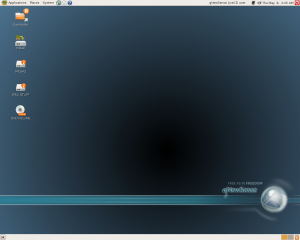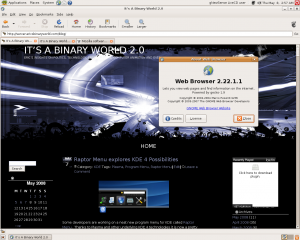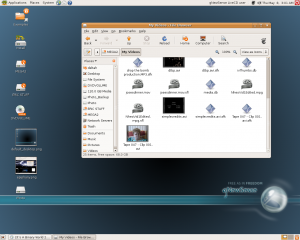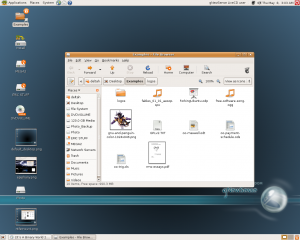gNewSense 2.0 (deltah) Review
By EricMesa
- 3 minutes read - 499 wordsSo gNewSense 2.0 came out a few days ago as the gNewSense crew is tracking Ubuntu LTS releases. Of course, the bad part is that there is no upgrade path from gNewSense 1.0 to 2.0. Ubuntu recommends upgrading by going from release to release so upgrading is not feasible (or is too hard for the developers to implement) so freedom lovers need to have a good backup strategy.
Since I reviewed gNewSense 1.0, I wanted to structure this review as comparing and contrasting this release to the last one to see where the progress has come. They have a much cooler looking desktop background. There wasn’t anything wrong with the last one - it just didn’t have as much of a cool factor. They still have ugly icons on the screen.
I mentioned in my last review that I thought it was wierd that gNewSense came with Firefox and not IceWeasel. Well, the Free Software Foundation (FSF) appears to have skirted the issue this time around because they just included Epiphany instead. This way they get to use the standard Gnome browser without worrying about explaining IceWeasel and Firefox and all that ridiculousness.
The GIMP is still included - no reason for them to remove it. Ditto for Emacs.
To keep things consistent with the last review I loaded up gNewSense 2.0 (deltah) onto my Windows computer. gNewSense was able to mount my NTFS external hard drive without any problems as well as detecting my NTFS internal hard drives. This remains unchanged from last time.
The examples folder was also included again on this release. These are examples of common tassk which may be completed using the included software. Strangely, they included the GPL v2 again even though the GPL v3 has been out for, I think, almost a year now. To find out more about the examples files, see my previous gNewSense review.
Overall, there isn’t really too much to report. Most of the same software is there - just updated to the latest version. I’ve read that most of the changes were under-the-hood (or bonnet, if you like) and wouldn’t be noticed by most users. This version appeared to run a little slower off the CD, but that doesn’t really say much about how it’ll run installed. I still recommend it for anyone who wants a completely pure Linux version with the simplicity of Ubuntu. This can also be achieved by using Fedora, Debian, and Mandriva Free and not enabling any repositories containing non-free software. I’d recommend it to anyone who, as they say on LugRadio, Loves Freedom. (By the way, it appears to have incorrectly detected my keyboard because when I try to put quotes I get the @) Freedom-Haters shoudl stay away as other reviews I’ve read seem to imply that you can’t start off with a gNewSense install and enable the non-free repos. I think they’ve changed some settings in the kernel or elsewhere to make it next to impossible to install such software.



